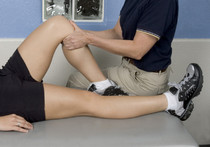
Todays Massage Therapists utilize multiple types of Bodywork modalities, below are some of the techniques offered by therapists at Massage MN.
-Frank Herrmann, Owner Massage-MN, Certified Orthopedic
Massage Therapist
ORTHOPEDIC MASSAGE
Combining some elements of sports and medical massage, orthopedic massage integrates ten modalities to treat soft-tissue pain and injury. Emphasis is placed on understanding both the injury and its
rehabilitation criteria. Three basic elements adhered to, despite the technical diversity in treatment, are assessment, matching the treatment to the injury, and adaptability of treatment.
NEUROMUSCULAR THERAPY
This comprehensive program of soft-tissue manipulation balances the bodys central nervous system with the musculoskeletal system. Based on neurological laws that explain how the central nervous
system initiates and maintains pain, the goal is to help relieve the pain and dysfunction by understanding and alleviating the underlying cause. Neuromuscular therapy can help individuals who
experience distortion and biomechanical dysfunction, which is often a symptom of a deeper problem. It is also used to locate and release spasms and hypercontraction in the tissue, eliminate trigger
points that cause referred pain, rebuild the strength of injured tissues, assist venous and lymphatic flow, and restore postural alignment, proper biomechanics, and flexibility to the
tissues.
MYOFASCIAL RELEASE
Myofascial release is the three-dimensional application of sustained pressure and movement into the fascial system in order to eliminate fascial restrictions and facilitate the emergence of emotional
patterns and belief systems that are no longer relevant or are impeding progress. First, an assessment is made by visually analyzing the human frame, followed by the palpation of the tissue texture
of various fascial layers. Upon locating an area of fascial tension, gentle pressure is applied in the direction of the restriction.
SPORTS MASSAGE
Sports massage is designed to enhance athletic performance and recovery. There are three contexts in which sports massage can be useful to an athlete: pre-event, post-event, and injury treatment.
Pre-event massage is delivered at the performance site, usually with the athlete fully clothed. Fast-paced and stimulating, it helps to establish blood flow and to warm up muscles. During the
massage, the athlete generally focuses on visualizing the upcoming event. Post-event massage is also delivered on site, through the clothes. The intent here is to calm the nervous system and begin
the process of flushing toxins and waste products out of the body. Post-event massage can reduce recovery time, enabling an athlete to resume training much sooner than rest alone would allow. When an
athlete sustains an injury, skillful massage therapy can often speed and improve the quality of healing.


